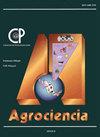WATER USE AND SUPPLY IN THE NORTHERN REGION OF BAJA CALIFORNIA, MEXICO
IF 0.5
4区 农林科学
Q4 AGRICULTURE, MULTIDISCIPLINARY
引用次数: 0
Abstract
The demographic and economic growth in the northern region of the Mexican state of Baja California has led to increased water use and competition for this resource among diverse consumer sectors. The regional dynamism has made it increasingly difficult to meet the demand for water provision. The aim of this investigation was to allocate the water withdrawn from the Mexicali Valley and San Luis Río Colorado (SLRC) aquifers in a scenario of water scarcity among the various consumer sectors by municipality of the states of Baja California and Sonora, as well as to determine the price that would allow for a reduction in the amount of water taken from the aquifers. A spatial equilibrium model was formulated and validated, considering fixed supply and functions of demand. The 2019 results show that the total demand for water from municipalities in residential, commercial, industrial, agricultural and livestock sectors were 197.2, 21.7, 16.7, 758 and 5.7 hm3, with Tijuana standing out in the first three sectors, whereas Mexicali and SLRC were highlighted in the farming sector. Regarding the water price, the Tijuana, Tecate, and Ensenada municipalities pay a high tariff for its use, whereas Mexicali and SLRC pay the lowest tariffs. A 10 % reduction in water availability would be achieved if the price in the agricultural sector in Mexicali and SLRC increased by 20 and 22 %, respectively, over the base price. As the price rises, the demand in this sector for both municipalities would decrease by 2.6 %.墨西哥下加利福尼亚州北部地区的水使用和供应
墨西哥下加利福尼亚州北部地区的人口和经济增长导致了水资源使用量的增加以及不同消费部门之间对这一资源的竞争。区域的活力使得越来越难以满足对供水的需求。本次调查的目的是在水资源短缺的情况下,通过下加利福尼亚州和索诺拉州的市政当局,将从墨西卡利山谷和圣路易斯Río科罗拉多州(SLRC)含水层抽取的水分配给各个消费部门,并确定可以减少从含水层抽取的水量的价格。考虑固定供给和需求函数,建立并验证了空间均衡模型。2019年的结果显示,住宅、商业、工业、农业和畜牧部门的市政用水总需求分别为197.2、21.7、16.7、758和5.7 hm3,蒂华纳在前三个部门中表现突出,而墨西卡利和SLRC在农业部门表现突出。在水价方面,提华纳、特卡特和恩塞纳达市政当局的水费很高,而墨西卡利和SLRC的水费最低。如果墨西卡利和SLRC农业部门的价格分别比基本价格提高20%和22%,可用水量将减少10%。随着价格的上涨,这两个城市对该部门的需求将下降2.6%。
本文章由计算机程序翻译,如有差异,请以英文原文为准。
求助全文
约1分钟内获得全文
求助全文
来源期刊

Agrociencia
农林科学-农业综合
CiteScore
0.50
自引率
33.30%
发文量
51
审稿时长
18-36 weeks
期刊介绍:
AGROCIENCIA is a scientific journal created and sponsored by the Colegio de Postgraduados. Its main objective is the publication and diffusion of agricultural, animal and forestry sciences research results from mexican and foreign scientists. All contributions are peer reviewed. Starting in the year 2000, AGROCIENCIA became a bimonthly and fully bilingual journal (Spanish and English versions in the same issue). Since 2007 appears every month and a half (eight issues per year). In addition to the printed issues, the full content is available in electronic format.
 求助内容:
求助内容: 应助结果提醒方式:
应助结果提醒方式:


